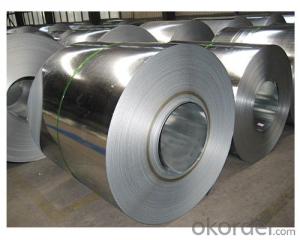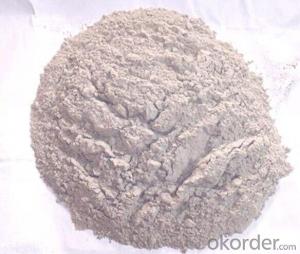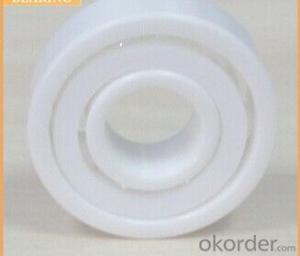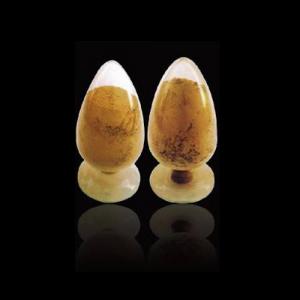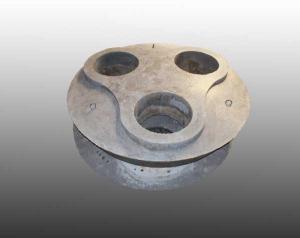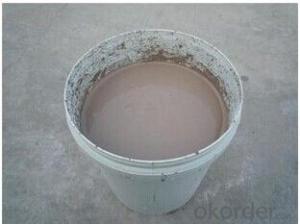Best Cold Rolled Steel Coil Q195~Q345 --Good Visual Effect
- Loading Port:
- China main port
- Payment Terms:
- TT OR LC
- Min Order Qty:
- 50 m.t.
- Supply Capability:
- 10000 m.t./month
OKorder Service Pledge
OKorder Financial Service
You Might Also Like
Best Cold Rolled Steel Coil Q195~Q345 --Good Visual Effect
1.Structure of Best Cold Rolled Steel Coil Q195~Q345 :
The raw material of cold rolled steel coil/sheet is high quality hot rolled product, and after pickling continuous rolling, degreasing, annealing,skin pass,slitting and cut to length line etc. Along with it many kinds of new technology and new process of global cold rolling production have been applied. Therefore the quality of the goods could be guaranteed. The product is widely used in outdoor and interior decoration, furnishing manufacturing, home appliance, automobile etc.
2.Main Features of Best Cold Rolled Steel Coil Q195~Q345 :
• Excellent process capability
• Smooth and flat surface
• Workability, durability
• Excellent heat resistance performance
3. Cold Rolled Steel Images
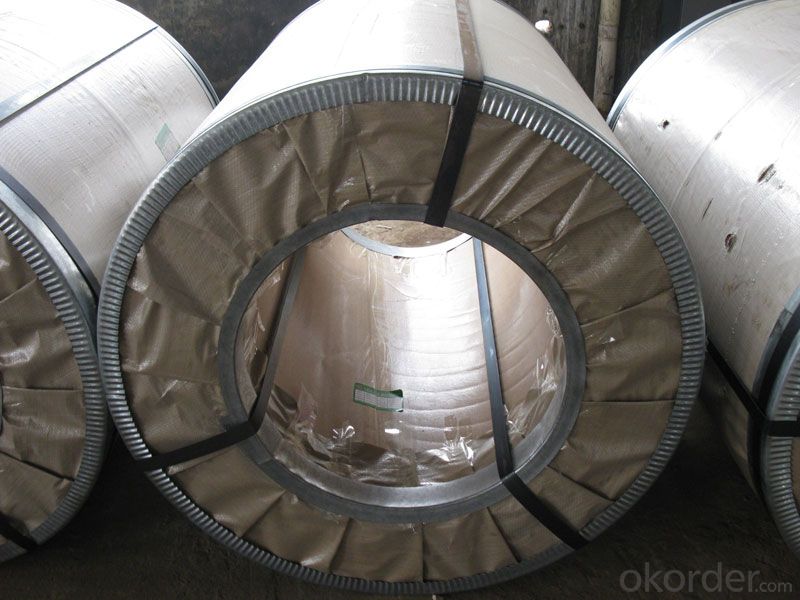
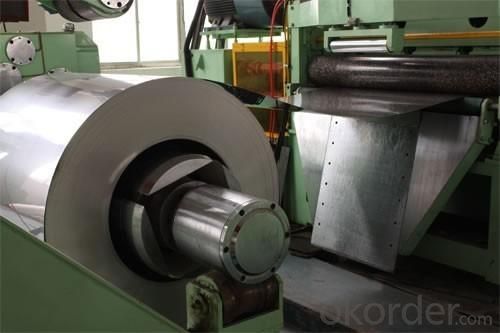
4.Cold Rolled Steel Specification
Standard:AISI,ASTM,DIN,GB,JIS,JIS G3302 ASTM 653M EN10142
Grade: Q195~Q345
Thickness: 0.16mm~2.0mm
Width: 1250mm MAX
Coil weight:3-12 MT
Coil ID:508/610mm
FAQ
1.How to guarantee the quality of the products?
We have established the international advanced quality management system,every link from raw material to final product we have strict quality test.
2. How long can we receive the product after purchase?
Usually within thirty working days after receiving buyer’s advance payment or LC. We will arrange the factory manufacturing as soon as possible. The cargo readiness usually takes 15-25 days, but the shipment will depend on the vessel situation.
- Q:What are the specific requirements of monolithic refractories for blast furnace applications?
- Monolithic refractories used in blast furnace applications must possess specific attributes to withstand the extreme conditions within the furnace. These requirements include high thermal conductivity, excellent thermal shock resistance, superior erosion and abrasion resistance, and good chemical resistance to withstand the corrosive nature of molten iron and slag. Additionally, they should have low porosity to prevent the penetration of molten metal, high mechanical strength to withstand the weight of the burden, and good dimensional stability to maintain their shape and integrity during operation.
- Q:How do monolithic refractories resist chemical attack from molten metals and slags?
- Monolithic refractories are designed to resist chemical attack from molten metals and slags through a combination of factors. Firstly, monolithic refractories are typically made from high-quality materials that have excellent chemical resistance properties. These materials, such as alumina, magnesia, or silica, have a stable chemical structure that can withstand the corrosive nature of molten metals and slags. Secondly, monolithic refractories are often formulated with additives or binders that enhance their resistance to chemical attack. These additives can improve the refractory's ability to form a protective layer on its surface, which acts as a barrier between the refractory material and the corrosive molten metal or slag. Additionally, monolithic refractories are often designed with a dense microstructure that limits the penetration of molten metals and slags. The dense structure minimizes the pathways through which corrosive agents can reach the refractory material, reducing the risk of chemical attack. Moreover, monolithic refractories can be installed with proper joint design and anchoring systems to prevent the infiltration of corrosive substances. This ensures that the refractory lining remains intact and effectively resists chemical attack. Overall, the combination of high-quality materials, additives, dense microstructure, and proper installation techniques contribute to the ability of monolithic refractories to resist chemical attack from molten metals and slags, thereby extending their lifespan and maintaining the integrity of the refractory lining in high-temperature applications.
- Q:How do monolithic refractories withstand the corrosive environments in steelmaking processes?
- Monolithic refractories are able to withstand corrosive environments in steelmaking processes due to their unique properties and composition. First and foremost, monolithic refractories are known for their high resistance to temperature and thermal shock. Steelmaking processes involve extremely high temperatures, sometimes reaching up to 1700 degrees Celsius. Monolithic refractories are designed to withstand these extreme temperatures without losing their structural integrity. Additionally, monolithic refractories have excellent chemical resistance. The corrosive environments in steelmaking processes often consist of aggressive chemicals such as molten metal, slag, and gases like carbon monoxide and sulfur dioxide. Monolithic refractories are made from materials that are resistant to these chemicals, preventing them from reacting and causing corrosion. Moreover, monolithic refractories have a dense and homogeneous structure. This helps to prevent the penetration of corrosive agents into the refractory material, further enhancing its resistance to corrosion. The dense structure also minimizes the formation of cracks and fissures, which can act as pathways for corrosive agents to infiltrate the refractory. Furthermore, monolithic refractories are often made from materials with high refractoriness, such as alumina, magnesia, and silica. These materials have high melting points, which makes them more resistant to the extreme temperatures in steelmaking processes. They also have low thermal conductivity, which helps to minimize heat transfer and reduce the risk of thermal damage to the refractory. Lastly, monolithic refractories are often designed with specific additives and binders that enhance their resistance to corrosion. These additives can include materials like zircon, chrome, or graphite, which provide additional protection against the corrosive environment. In conclusion, monolithic refractories withstand the corrosive environments in steelmaking processes through their high resistance to temperature and thermal shock, excellent chemical resistance, dense and homogeneous structure, high refractoriness, and the use of specific additives and binders. These properties and characteristics make monolithic refractories an ideal choice for withstanding the harsh conditions of steelmaking processes and ensuring the longevity and efficiency of the refractory lining.
- Q:How do monolithic refractories withstand chemical attack from molten metals and slag?
- Monolithic refractories withstand chemical attack from molten metals and slag due to their unique composition and properties. These refractories are made of a single, homogeneous material, which provides them with better resistance against chemical corrosion. Additionally, monolithic refractories are designed to have low porosity and high density, which limits the penetration of molten metals and slag into their structure. These materials also have high melting points, enabling them to withstand the extreme temperatures present in industrial processes. Overall, the combination of their composition, low porosity, high density, and high melting points makes monolithic refractories highly resistant to chemical attack from molten metals and slag.
- Q:What are the advantages of using low-moisture castables in the iron and steel industry?
- Low-moisture castables offer several advantages in the iron and steel industry. Firstly, they have a lower water content, which allows for faster and easier installation. This results in reduced downtime and increased productivity. Secondly, low-moisture castables have excellent strength and thermal shock resistance, making them highly durable in high-temperature applications. This helps to prolong the lifespan of refractory linings, saving on maintenance and replacement costs. Additionally, their low moisture content minimizes the risk of steam explosions during installation or curing. Lastly, these castables offer improved energy efficiency by reducing heat loss, resulting in lower fuel consumption and greenhouse gas emissions. Overall, the use of low-moisture castables in the iron and steel industry enhances operational efficiency, durability, and environmental sustainability.
- Q:How do monolithic refractories withstand the mechanical impacts in ladle lip applications?
- Monolithic refractories are able to withstand mechanical impacts in ladle lip applications due to their high density, strength, and resistance to thermal shock. These refractories are designed to have excellent impact resistance, preventing any cracks or fractures from occurring when the ladle is being handled or poured. Additionally, they have a high refractoriness, ensuring that they can withstand the extreme temperatures experienced during the metal pouring process.
- Q:What are the challenges in recycling and disposing of monolithic refractories?
- Recycling and disposing of monolithic refractories pose several challenges that need to be addressed in order to minimize environmental impact and maximize resource efficiency. One of the main challenges is the handling and transportation of monolithic refractories due to their heavy and bulky nature. These materials are often used in high-temperature applications, such as furnace linings, and can be difficult to dismantle and remove from equipment. The weight and size of monolithic refractories make it challenging to transport them to recycling or disposal facilities, requiring specialized equipment and infrastructure. Another challenge is the heterogeneity of monolithic refractories, which often contain various types of refractory materials, binders, and additives. This complexity makes it difficult to separate and categorize different components for effective recycling. The lack of standardized recycling processes for monolithic refractories further complicates the recycling efforts. Furthermore, the high melting points of refractory materials used in monolithic refractories can make it energy-intensive and costly to recycle them through conventional methods like melting and remolding. Alternative recycling methods, such as thermal treatment or chemical processing, need to be explored and optimized to make the recycling process more economically and environmentally viable. Ensuring the proper disposal of monolithic refractories is also a challenge. If these materials are not recycled, they often end up in landfills, taking up valuable space and potentially leaching harmful substances into the environment. Landfilling refractories can also pose a risk of contamination if they are not properly managed or if hazardous additives are present in the materials. To address these challenges, it is crucial to invest in research and development to develop more efficient and cost-effective recycling technologies for monolithic refractories. Collaboration between manufacturers, recycling facilities, and regulatory bodies is also essential to establish guidelines and standards for the recycling and disposal of these materials. Additionally, educating industries and end-users about the importance of recycling and the availability of recycling options can help increase the demand and feasibility of recycling monolithic refractories.
- Q:How do monolithic refractories contribute to the overall efficiency of ladles and tundishes?
- Monolithic refractories play a crucial role in enhancing the overall efficiency of ladles and tundishes in several ways. Firstly, monolithic refractories are known for their excellent thermal insulation properties. By lining the ladles and tundishes with monolithic refractories, heat losses are minimized, resulting in reduced energy consumption and improved thermal efficiency. This insulation capability also helps in maintaining a consistent temperature within the ladles and tundishes, which is essential for the proper casting and solidification of molten metal. Moreover, monolithic refractories offer superior resistance to thermal shocks and chemical corrosion. Ladles and tundishes are subjected to extreme temperatures and harsh chemical environments due to the contact with molten metal and various fluxes or additives. The use of monolithic refractories ensures a longer service life for ladles and tundishes by preventing cracking, spalling, or erosion caused by these harsh conditions. This, in turn, reduces downtime for maintenance and replacement, leading to increased overall efficiency. Additionally, the flexibility and ease of installation of monolithic refractories contribute to the efficiency of ladles and tundishes. Unlike traditional brick lining, monolithic refractories can be easily formed and installed in various shapes and sizes, allowing for better customization and optimization of ladles and tundishes. This adaptability helps in improving the flow dynamics of molten metal, reducing turbulence, and enhancing the overall casting process efficiency. In summary, monolithic refractories enhance the overall efficiency of ladles and tundishes through their exceptional thermal insulation properties, resistance to thermal shocks and chemical corrosion, and flexibility in installation. By minimizing heat losses, extending service life, and optimizing the casting process, monolithic refractories contribute significantly to the overall efficiency and productivity of ladles and tundishes in the metal industry.
- Q:How do monolithic refractories contribute to the overall efficiency of iron and steel production?
- Monolithic refractories play a crucial role in enhancing the overall efficiency of iron and steel production. These refractories, which are made from a single material, provide exceptional thermal insulation, resistance to high temperatures, and excellent mechanical strength. By lining the furnaces, ladles, and other equipment used in the production process, monolithic refractories help in maintaining and regulating the required high temperatures for melting, refining, and shaping iron and steel. This insulation reduces heat loss, minimizes energy consumption, and ensures a more efficient and cost-effective production process. Additionally, the mechanical strength of monolithic refractories allows for better protection against wear and tear, resulting in increased equipment lifespan and reduced downtime for repairs and maintenance. Overall, the use of monolithic refractories significantly contributes to the efficiency, productivity, and sustainability of the iron and steel production industry.
- Q:How do monolithic refractories resist corrosion and erosion in the iron and steel industry?
- Monolithic refractories in the iron and steel industry are designed to resist corrosion and erosion through a combination of their composition and application techniques. Firstly, the composition of monolithic refractories includes high-quality raw materials such as alumina, magnesia, and silica. These materials possess excellent resistance to corrosion and erosion. Alumina, for example, is highly resistant to chemical attack and can withstand high temperatures, making it ideal for protecting against the corrosive nature of the iron and steel industry. In addition to the choice of materials, the application techniques used in installing monolithic refractories also play a crucial role in their resistance to corrosion and erosion. Monolithic refractories are typically installed using various methods such as gunning, ramming, or casting. These techniques ensure a tight and seamless bond between the refractory and the steel structure, minimizing the chances of corrosion and erosion. Furthermore, monolithic refractories can be customized to suit the specific needs of different parts of the iron and steel industry. For example, areas exposed to molten metal require refractories with high thermal conductivity and excellent resistance to chemical attack. By tailoring the refractory to the specific application, it becomes more effective in resisting corrosion and erosion. Moreover, monolithic refractories are often designed with additives or binders that enhance their resistance to corrosion and erosion. These additives can provide additional protection against chemical attacks from molten metal or corrosive gases, making the refractory even more durable in harsh conditions. Overall, monolithic refractories resist corrosion and erosion in the iron and steel industry due to their composition, application techniques, customization, and the inclusion of additives. By combining these factors, monolithic refractories provide excellent protection to the steel structures, ensuring their longevity and efficiency in the challenging environments of the iron and steel industry.
1. Manufacturer Overview |
|
|---|---|
| Location | |
| Year Established | |
| Annual Output Value | |
| Main Markets | |
| Company Certifications | |
2. Manufacturer Certificates |
|
|---|---|
| a) Certification Name | |
| Range | |
| Reference | |
| Validity Period | |
3. Manufacturer Capability |
|
|---|---|
| a)Trade Capacity | |
| Nearest Port | |
| Export Percentage | |
| No.of Employees in Trade Department | |
| Language Spoken: | |
| b)Factory Information | |
| Factory Size: | |
| No. of Production Lines | |
| Contract Manufacturing | |
| Product Price Range | |
Send your message to us
Best Cold Rolled Steel Coil Q195~Q345 --Good Visual Effect
- Loading Port:
- China main port
- Payment Terms:
- TT OR LC
- Min Order Qty:
- 50 m.t.
- Supply Capability:
- 10000 m.t./month
OKorder Service Pledge
OKorder Financial Service
Similar products
New products
Hot products
Related keywords
